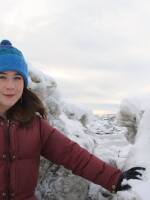The quota for the sac roe herring fishery is third greater than the 10-average harvest.
The Togiak Pacific herring fishery will see a large return this spring, according to the recently released Alaska Department of Fish and Game 2019 forecast.
Based on aerial surveys and population age, ADF&G predicts the Togiak District Pacific herring biomass will be 217,548 tons. That is a 59 percent increase from last year’s forecast. It will allow for a total harvest in the Togiak District sac roe herring fishery of 26,930 tons.
“We feel confident we have a stable population there,” said Tim Sands, area management biologist.
The large forecast is in keeping with ADF&G’s model of Togiak herring population fluctuation.
According to the report, “Large recruitments in this population generally occur every eight to 10 years and typically last one to two years. The last large recruitment event experienced by Togiak was the 2005 year-class, which was detected in 2009 when the age-4 fish recruited to the fishery.”
However, the department has had some difficulty in studying Togiak herring in recent years. The budget for managing the Togiak herring fishery was cut for one season in 2016, so biologists could not gather data on age class or peak biomass that year. Then in 2017 and 2018, poor weather made it difficult to fly aerial surveys to estimate the peak biomass. To compensate for those gaps in the data, ADF&G lowered the exploitation rate, the percent of the total biomass that can be harvested.
“We decided that the prudent thing to do was reduce the exploitation rate 2 percent per year for each year of missing data, and that’s how we came up with the 14 percent exploitation rate,” said Sands.
Another factor that is prompting ADF&G to exercise caution, is changing climate conditions. The National Oceanic and Atmospheric Administration documented record warm temperatures in Alaska and the Bering Sea during October this year, and sea ice extent is significantly below average.
“It’s been much warmer out there,” said Sands. “How is that going to impact herring growth and survival and everything else? Less ice, …warm water in the Bering Sea—is that going to be good for herring survival and growth, or is it going to be bad? We don’t know, and so that’s additional uncertainty that kind of gives us a little bit of pause.”

Even with the lower exploitation rate, the quota is still 31 percent greater than the 10-year average sac roe harvest.
The sac roe herring fishery quota is split between the purse seine and gillnet fleets. At the Alaska Board of Fisheries meeting in Bristol Bay earlier this month, the board approved a change in the allocation, giving the purse seine fleet 80 percent of the quota and designating 20 percent for gillnetters. Previously, the split was 70 percent to purse seine and 30 percent to gillnet. Participation from gillnetters has dropped off substantially in recent years as the price for herring also declined.
That trend is likely to hold true in 2019. Sands said, of two seafood processors he spoke with, only Icicle Seafoods expects to have gillnet vessels participate in the fishery.
He said, “They anticipate having two gillnetters... Last year they had the only gillnetter.”
If the gillnet fleet does not harvest its full quota, ADF&G can reallocate 50 percent of the unharvested quota to the purse seine fleet in season.
Contact the author at avery@kdlg.org or 907-842-2200.




